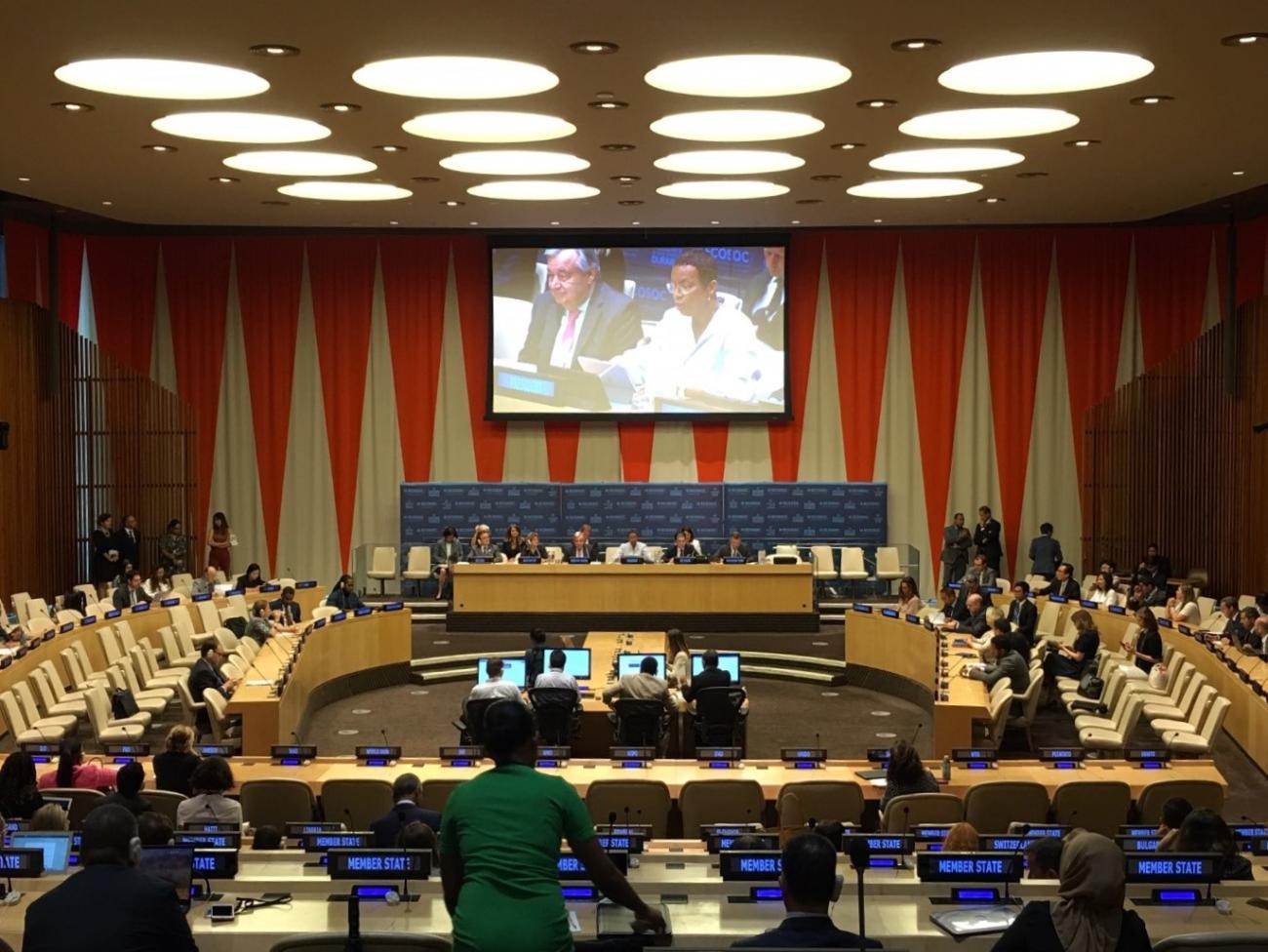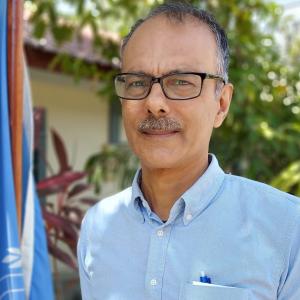Accelerating progress to achieve the SDGs: Reflections from the HLPF 2019 by the UN Resident Coordinator in Timor-Leste

Attending large conferences such as the High-Level Political Forum (HLPF) in New York often leaves participants with a mix of feelings, says Roy Trivedy.
On the one hand, it is always exciting to realise how many other governments, institutions, groups and individuals are working on common issues and challenges that you personally care about.
It’s exhilarating to feel part of a bigger movement, especially knowing that only a small fraction of people who are practically working on these issues have an opportunity to attend some of these big conferences.
On the other hand as I return to my guest house (less than 10 minutes from the UN offices), many of the people I talk with, inform me that they know little about the SDGs or the discussions about global development issues which I have spent all day listening and contributing to.
The Secretary General’s Report on the SDG Progress specifically focuses on the climate crisis and inequality, that are responsible for slowing the journey towards the Sustainable Development Goals and progress towards a fairer, healthier planet for all. The Report notes that after four years of implementing the SDGs, progress has been slow and that both globally and in almost all countries there is urgent need to accelerate progress.This is one of the major themes of the HLPF this year.
This matters because unless we can find ways of accelerating implementation of the Global Goals in the next few years, the world will struggle to meet the aspirations agreed by Global Leaders in Agenda 2030.
Millions of lives and people’s well-being depend on faster progress.
So, what are some of the ways of accelerating progress on the SDGs?
Some key elements that made a strong impression on me, as I listened to this week’s discussions, were as follows:
• Strengthening Human Capital by investing more in Education, Health, Water and Sanitation was acknowledged as a key element for accelerating progress on the SDGs in virtually all countries presenting at the HLPF. One of the key issues underlying these discussions however concerns how to leverage better ‘returns on investments’ in each sector and ensure that the investments made really generate lasting results that can contribute to national and local transformations;
• Better understanding and utilisation of the integration between the SDGs. For example, we heard many examples of the need to invest in gender equality to obtain better returns on education; and to invest in affordable and clean energy to eliminate poverty and tackle hunger;
• Stronger emphasis on inclusion of all people regardless of nationality, gender, race, age, class, ability or disability, sexual orientation, where people reside.
• Making better use of science and technology was also a constant theme for accelerating progress on the SDGs. I heard many examples of how technology is being used: in classrooms to improve teaching and the quality of education; in new ways to improve public health and environmental outcomes, strengthen early warning systems for disasters; promote gender equality and tackle sexual exploitation; in humanitarian situations to tackle hunger and shortages of clean water; to improve the way that urban and peri-urban areas are designed to better support people’s well-being; and to promote decent work and appropriate skills development.
Another stream of thinking to accelerate progress on the SDGs revolves around how to use the global and regional assets of organisations such as the United Nations, in a more focused way to make a difference at country and local levels.
I enjoyed taking part as a panellist in the VNR Lab on ‘Regional Support to follow-up the VNR process’. We discussed some of the ways in which institutions and people working on regional issues can assist SDG acceleration at county levels.
Some of the ways this can happen are:
- By ensuring economic, social, cultural and environmental data are analysed and made available to country teams to help determine priorities and identify areas where more concerted action may be required to accelerate progress;
- By analysing and making accessible comparative data and trends using multi-disciplinary and cross-sectoral approaches on threats to progress such as on inequality or potential conflicts over resources;
- By identifying things that are working well to generate faster progress on the SDGs and identifying champions (individuals, institutions, platforms and ways of working) at regional level that can assist in accelerating progress at national and local levels;
- By creating opportunities and spaces for better regional and sub-regional exchange of knowledge and practices among Parliamentarians, local leaders, civil society representatives and other to exchange ideas, experience and enhance acceleration efforts;
- By sharing information and mobilising financial and other resources at regional level that could be better utilised to improve progress at national and local levels.
In the VNR Lab we discussed how some these things are happening but also how in many cases, our current ways of working prevents better collaboration between teams based at regional, country and local levels.
We noted that people at country level may at times need to take a step back from the day-to-day challenges that they are working on and proactively invite colleagues who are working at regional levels to share their knowledge, experiences, networks and contacts.
For those working at regional level, there may also be a need to be better attuned to the challenges that teams working at national and local levels are confronting and offering ways in which they can be better supported.
My personal experience is that this is not happening consistently enough.
Too often, at country level, we are relying on our own individual networks to access regional knowledge and experience. We need to move more effectively from the ‘know who’ to the ‘know how’ world.
I can think of several cases where, if I had taken a step back and accessed some of the regional expertise potentially available to the teams that I have been working with, we may have made faster and more sustained progress.
I can also think of many cases where someone from a regional organisation comes at short notice to visit a country team and informs the country team that they have established a regional ‘knowledge platform’ and are surprised that little use is being made of the information available on the platform, or that they plan to work on a specific issue or challenge, without first checking about what is happening at country or local levels or the relevance of the proposed solutions.
These are all simple things and elements of the challenge that all of us need to address if we are to accelerate the implementation of the SDGs.
My biggest personal take-away from the HLPF 2019 however, is that we need to urgently find more effective ways of engaging with people and institutions that are outside the mainstream ‘development industry’ to accelerate progress on the SDGs.
If we are unable to communicate and connect effectively with the lives of people (men, women, girls and boys), and support real ‘lifestyle changes’ on the part of many people, big conferences and events like this will continue to reach only the small number of committed development activists. For acceleration to really take hold, we need an agenda for action that all people, everywhere can play a part in.
Written by


















